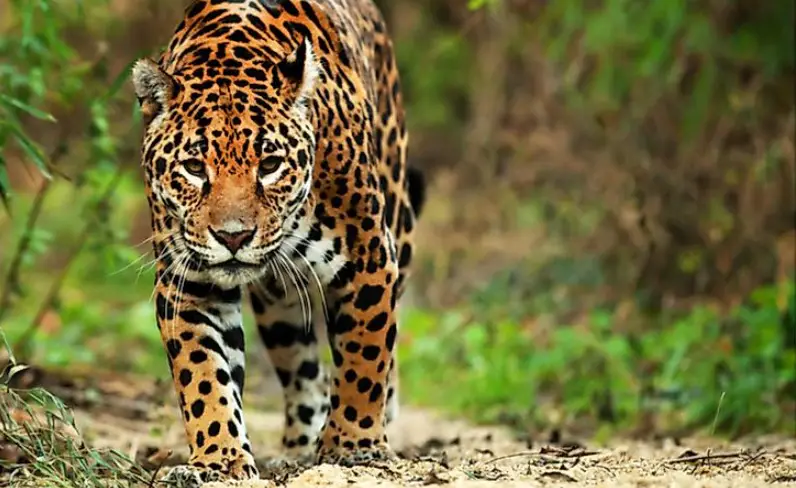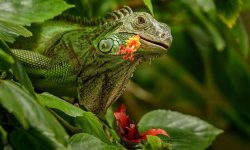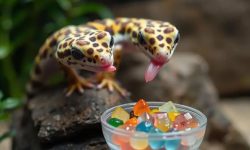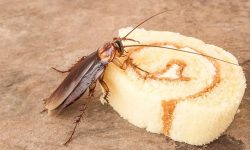As apex hunters of the Americas, jaguars are known for their remarkable strength and elusive nature. With their incredible strength, stealth and unmatched bite force, they dominate the dense rainforests, swamps and riverbanks where they live. Understanding what jaguars eat helps reveal how these elusive big cats survive and why they play such an important role in balancing their ecosystems. Jaguars have a remarkably diverse diet, and their ability to hunt both on land and in water sets them apart from other big cats.
In the wild, jaguars hunt with precision. They stalk quietly, move through dense vegetation without sound, and ambush prey with explosive power. Their jaws are strong enough to pierce skulls and crack turtle shells—something no other big cat can do. This unique hunting method allows jaguars to target animals that lions and tigers would rarely attempt. Their diet varies depending on habitat, season and prey availability.
This guide explores 20 foods jaguars hunt in the rainforest, offering a clear look at how they feed, why certain prey matters, and what makes them such extraordinary apex predators.
Understanding the Jaguar Diet

Jaguars are obligate carnivores, meaning they depend entirely on meat for survival. Their diet revolves around high-protein prey that fuels their muscular build and powerful movements. Unlike cheetahs or lions, jaguars rely on stealth rather than speed. They typically hunt alone, approaching prey slowly before delivering a fatal bite. This style of hunting allows them to target a wide variety of animals on both land and water.
Their bite force is one of the strongest among all mammals. Jaguars consistently use a skull-crushing bite to kill prey instantly—a technique unique in the cat world. This ability makes hard-shelled animals like turtles and armadillos accessible food sources that many predators struggle to exploit. Jaguars also swim well, giving them access to fish, caimans and other aquatic prey.
Because jaguars cover large territories, their diet changes depending on the availability of prey. In dense rainforests, they hunt monkeys and tapirs. Along riverbanks, they pursue turtles, fish and capybaras. Their dietary flexibility helps maintain healthy ecosystems by preventing any single species from overpopulating. Understanding their diet also highlights the importance of conserving natural habitats where jaguars hunt and thrive.
20 Foods Jaguars Hunt in the Rainforest
1. Capybaras
Capybaras are one of the jaguar’s favorite large prey animals. Their large size and slow movement near water make them excellent targets. Jaguars use their powerful jaws to deliver a fatal bite, often dragging capybaras into water to finish the kill.
Capybaras live in herds near riverbanks, making them easier to locate. Jaguars often ambush them when they come to drink or graze. Their meat provides a valuable source of protein and fat needed for survival in the wild.
Because capybaras spend much of their time near water, jaguars’ strong swimming skills give them an advantage over other predators.
2. Caimans
Caimans are one of the most impressive prey jaguars hunt. Despite their tough skin and strong bite, caimans fall victim to jaguars using their skull-piercing attack. Jaguars often leap from riverbanks or tree roots to surprise them.
Hunting caimans requires immense strength. Jaguars grip the reptile’s skull and forcefully bite through bone to reach the brain. This method is quick and effective, preventing prolonged struggles in the water.
Caimans offer a large amount of meat, making them valuable prey for jaguars during seasonal shortages of other animals.
3. Tapirs
Tapirs are the largest land mammals in South America, and jaguars frequently target them. Their slow movement, especially when startled at night, makes them vulnerable to ambush. Jaguars prefer attacking tapirs near water or forest openings.
Because tapirs are heavy and strong, jaguars must rely on stealth. They creep close before delivering a powerful bite to the skull or neck. A successful tapir kill can provide food for several days.
Tapirs’ fatty meat helps jaguars store energy during leaner seasons when prey is harder to find.
4. Peccaries
Peccaries are wild pigs found throughout Central and South American forests. They travel in groups, which can make hunting dangerous. Jaguars typically single out a weaker or isolated peccary to avoid group retaliation.
Their thick skin and strong muscles require jaguars to use a precise bite. Jaguars often wait quietly near mud pits or fruit trees where peccaries forage. Once close enough, the jaguar attacks with speed.
Peccaries supply high-energy meat and fat, crucial for jaguars maintaining territories and raising cubs.
5. Deer
Deer are common prey for jaguars in both dense forests and open clearings. Their agility makes them harder to catch, but jaguars excel at evening or nighttime ambushes. They prefer hiding in vegetation and leaping out unexpectedly.
Once the jaguar reaches striking distance, its jaw force brings the deer down quickly. Jaguars often drag deer carcasses into cover to eat safely. Deer meat is lean and nutritious, providing valuable protein.
During dry seasons when water sources shrink, deer often become more concentrated near rivers—ideal hunting grounds for jaguars.
6. Monkeys
Monkeys are agile and fast, but jaguars still manage to hunt them using stealth. Jaguars climb trees surprisingly well for their size, allowing them to ambush monkeys resting on lower branches.
In rainforests, monkeys are abundant, giving jaguars frequent hunting opportunities. Jaguars often catch them during early morning or late afternoon when monkey activity is predictable.
Monkey meat provides essential nutrients, and smaller kills like these help jaguars conserve energy between larger hunts.
7. Sloths
Sloths are slow-moving animals that make easy prey for jaguars. Their sluggish pace and predictable movement patterns make them vulnerable in trees and on the ground. Jaguars often attack sloths resting low on branches.
Despite their thick fur, sloths provide tender meat. Their slow reactions give jaguars ample time to approach and deliver a skull-crushing bite. Many sloth species live in jaguar territory year-round.
Because sloths rely on camouflage rather than speed, jaguars’ keen sense of smell helps them locate these hidden animals.
8. Armadillos
Armadillos, with their armor-like shells, are difficult prey for many predators—but not for jaguars. The jaguar’s powerful bite can pierce the shell easily. They often flip armadillos over before biting into the softer underside.
Armadillos are abundant in forest floors, making them a reliable food source. They forage for insects and roots, making noise that gives away their position. Jaguars use silent stalking to catch them.
Their meat is rich in protein and easy to digest, providing consistent nourishment for jaguars across many habitats.
9. Turtles
Turtles are unique prey that only jaguars can exploit effectively. Their shells normally protect them from predators, but jaguars bite directly through the shell with remarkable force. This allows access to the soft body inside.
Jaguars commonly hunt turtles along riverbanks during dry seasons when water levels drop. They flip turtles onto their backs to expose softer areas before biting through the shell.
Because turtles are slow and abundant, they are a reliable food source—especially in swamps and mangroves.
10. Iguanas
Iguanas are common prey in Central and South American forests. Jaguars ambush them while they bask on logs or move through underbrush. Iguanas often freeze when startled, making them easier targets.
These reptiles provide moderate protein and hydration, especially during warm seasons. Jaguars may climb trees or leap from hidden spots to catch iguanas off guard.
Iguanas’ abundance makes them a practical food option when larger prey is scarce.
11. Birds
Birds make up a small but important part of the jaguar diet. Jaguars catch them by surprise on the ground or snatch them from low branches. They often rely on quick lunges and fast reflexes.
Ground-dwelling birds like curassows or tinamous are especially vulnerable. Their size and limited flight ability make them ideal targets for jaguars moving stealthily through undergrowth.
Bird meat provides easy-to-digest protein and is often a convenient snack between larger hunts.
12. Fish
Jaguars are excellent swimmers and often hunt fish in shallow rivers. They wade quietly until fish swim close, then strike with lightning speed. Their claws help scoop fish out of the water.
Fish provide hydration and lean protein. During dry seasons, when water recedes, fish become trapped in isolated pools—making them easy meals for jaguars.
This ability to hunt in water gives jaguars an advantage over other big cats that avoid aquatic environments.
13. Snakes
Jaguars occasionally hunt snakes, including large constrictors. Their strong jaws help them kill snakes quickly, preventing dangerous retaliation. Jaguars often bite snakes near the head to immobilize them instantly.
Snakes provide dense, energy-rich meat. Though risky, these hunts are common in areas with abundant reptiles. Jaguars approach quietly to avoid alerting the snake before striking.
Because many rainforest snakes camouflage well, jaguars rely on smell and movement detection to locate them.
14. Frogs
Frogs are small prey that jaguars catch opportunistically. They are abundant around rivers, swampy areas and forest floors. Jaguars often capture frogs by pinning them quickly before swallowing them whole.
Although frogs offer less energy compared to larger prey, they supply moisture and nutrients. Their availability during rainy seasons makes them a convenient food source.
Frogs also help jaguars stay energized when waiting for larger animals to come within range.
15. Rodents
Rodents such as agoutis and pacas form part of the jaguar’s varied diet. These animals move quickly, but jaguars rely on stealth and sudden leaps to catch them. Dense forests offer plenty of hiding spots for ambushes.
Rodent populations are typically high, giving jaguars reliable access to food year-round. They often hunt these small mammals during nighttime patrols.
Rodents provide moderate protein and are easy meals that help jaguars conserve energy.
16. Coatis
Coatis travel in groups, but jaguars often target individuals that wander too far from the group. Their long snouts and foraging behavior keep them distracted, making them easier to ambush.
Jaguars catch coatis both on the ground and in trees. Their flexible hunting style allows them to pursue coatis in multiple terrains. Coati meat is nutrient-dense and suitable for growing jaguar cubs.
Coatis are especially common in Central America, forming a regular part of the jaguar’s diet.
17. Raccoons
Raccoons are opportunistic animals that live near water sources—prime jaguar hunting grounds. Their curiosity often leads them into dangerous situations where jaguars wait.
Jaguars take advantage of raccoons’ predictable movements around food sources. They attack swiftly, using their weight to overpower the smaller animal. Raccoons provide a meaty, protein-rich meal.
Because raccoons live in overlapping areas with jaguars, encounters happen frequently.
18. Porcupines
Porcupines are risky prey due to their sharp quills, but jaguars handle them with precision. They flip porcupines over to expose the unprotected belly and deliver a fatal bite.
This technique prevents jaguars from being injured, showcasing their intelligence and adaptability. Porcupines are slow, making them manageable with the right strategy.
Their fatty meat provides essential calories during demanding hunting seasons.
19. Giant River Otters
Though uncommon, jaguars occasionally hunt giant river otters. These encounters usually take place in riverbanks where both species compete for fish. Jaguars use stealth and ambush instead of open confrontation.
Because otters are fast and social, jaguars take advantage of isolated individuals. Their thick muscle tissue offers high protein and energy.
Hunting otters highlights the jaguar’s versatility and fearlessness as an apex predator.
20. Carrion
While jaguars prefer fresh kills, they occasionally feed on carrion—especially during food shortages. Feeding on carcasses helps them conserve energy that would be spent hunting.
Carrion offers nutrients with minimal effort. Jaguars often discover carcasses left by floods, storms or other predators. They eat cautiously but efficiently.
This scavenging behavior helps maintain ecological balance by cleaning up dead animals.
FAQs About What Do Jaguars Eat
What do jaguars eat the most?
Capybaras, deer, peccaries and caimans are among their most common prey.
Do jaguars eat humans?
No. Attacks on humans are extremely rare and usually involve self-defense.
Do jaguars eat fruit?
Very rarely. They are obligate carnivores.
How much does a jaguar eat per day?
An adult may eat 2–3 kg of meat per day depending on activity and prey size.
Do jaguars hunt at night?
Yes. They are mostly nocturnal hunters.
Can jaguars eat turtles?
Yes. Their bite can pierce turtle shells easily.
Do jaguars hunt in water?
Yes. They are excellent swimmers and often hunt aquatic prey.
What is their strongest hunting advantage?
Their skull-crushing bite, stealth and climbing/swimming ability.
Are jaguars apex predators?
Absolutely. They sit at the top of the food chain in their habitats.
Do jaguars hoard food?
Sometimes they drag kills into cover to eat safely.
Final Thoughts
Jaguars are extraordinary hunters with a diet as diverse as the rainforests they roam. By understanding what jaguars eat, we gain insight into their power, adaptability and vital role within their ecosystems. Whether stalking capybaras at the water’s edge or cracking open turtle shells deep in the jungle, jaguars showcase unmatched strength and skill. Protecting their habitats ensures these remarkable predators continue shaping the natural world for generations to come.






